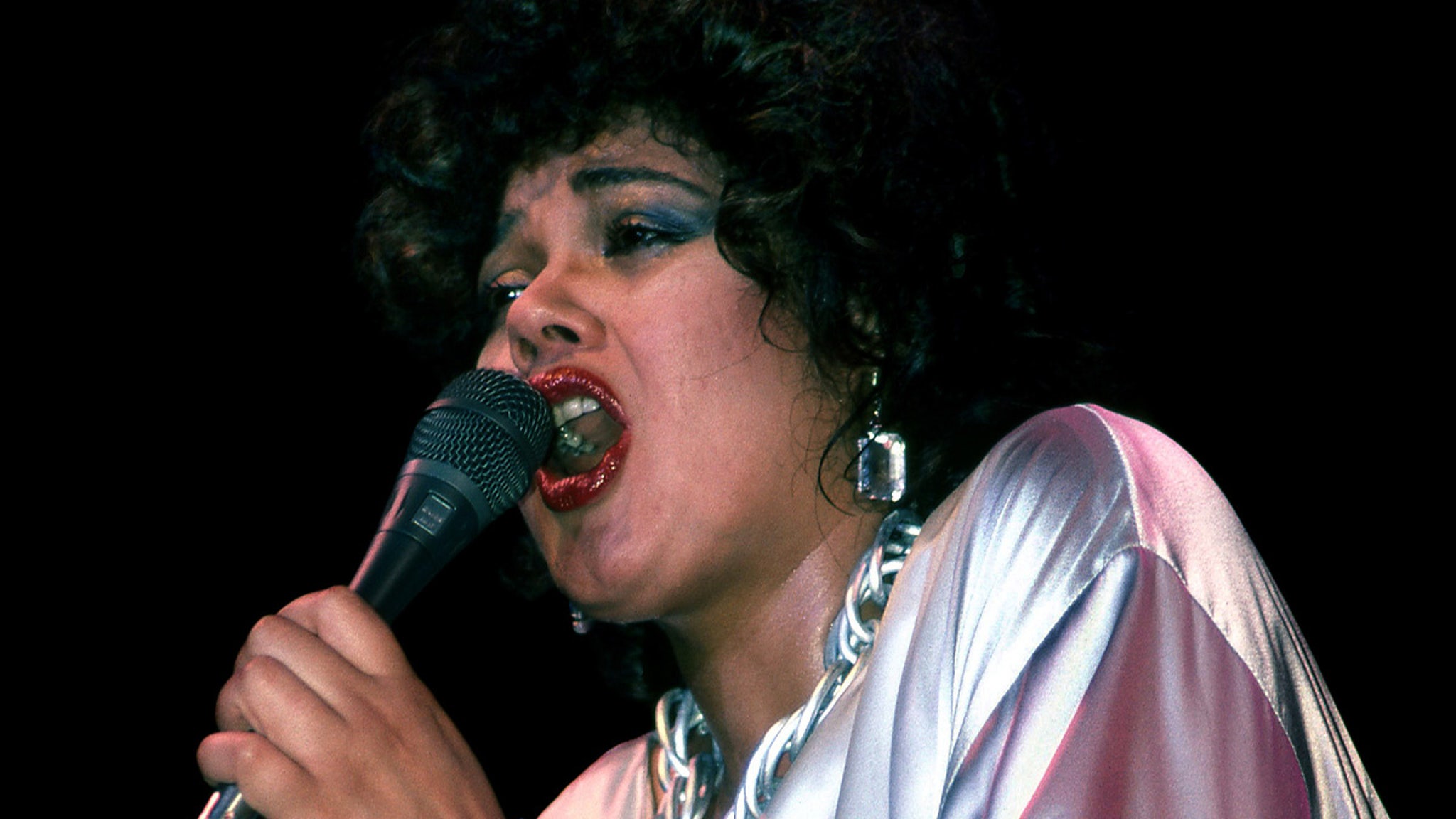Arizona
Diamondbacks outlast the Braves 16-13 to snap 4-game losing streak

ATLANTA (AP) — Geraldo Perdomo was determined he would not be intimidated by Atlanta’s five-run first inning.
“I just said to my teammates, `If they do it, we can do it back,’” Perdomo said.
Perdomo gave Arizona the lead with a two-run double in the ninth inning and the Diamondbacks took advantage of Atlanta’s worst pitching effort of the season to beat the Braves 16-13 on Tuesday night.
ATLANTA (AP) — Geraldo Perdomo gave Arizona the lead with a two-run double in the ninth inning and the Diamondbacks took advantage of Atlanta’s worst pitching effort of the season to beat the Braves 16-13 on Tuesday night.
Catcher Travis d’Arnaud and the Atlanta Braves agreed to an $8 million contract for next year, a deal that includes an $8 million team option for 2025 with no buyout.
Atlanta Braves executives say business will continue as usual under a new ownership structure following a spinoff from Liberty Media.
The Atlanta Braves have placed left-hander Kolby Allard on the 60-day injured list after he was diagnosed with nerve inflammation in his left shoulder.
It was Arizona’s first game in which each team had at least 13 runs and the first in the majors since the Chicago White Sox beat the Cubs 17-13 on Aug. 27, 2021.
Just as Perdomo predicted, the Diamondbacks answered Atlanta’s five-run first by scoring five in the second. The high-scoring pace led to a football-like final score.
“Couple missed extra points,” Arizona manager Torey Lovullo joked.
Said Atlanta manager Brian Snitker: “We kept coming back. They did, too. It was like a Coors Field game.”
The NL East-leading Braves have lost three straight. Arizona snapped a four-game losing streak.
“If you want to call it a cleansing, I guess you could,” Lovullo said.
Christian Walker homered twice and had three hits and five RBIs for Arizona. Corbin Carroll had two hits, scored three runs and drove in two.
Miguel Castro (5-3) pitched a scoreless eighth and Kevin Ginkel struck out the side in the ninth for his first save.
With the game tied at 13, Arizona pinch-hitter Jake McCarthy led off the ninth with a bloop single off Braves closer Raisel Iglesias (3-4). Alex Thomas hit a soft grounder that bounced past Matt Olson for an error, putting runners at second and third.
Perdomo’s double to center field gave Arizona the lead and Ketel Marte added a run-scoring single to push the lead to three runs. Marte drove in three runs with three hits.
Austin Riley drove in a career-high seven runs with three hits, including two homers — the last a go-ahead two-run shot in the sixth.
Dominic Canzone’s first career hit, a line drive single to right field off Kirby Yates in the eighth drove in Walker to tie it at 13. Kevin Pillar’s diving catch of Emmanuel Rivera’s sinking liner in left field ended the inning.
“Obviously, I’ll never forget it,” Canzone said.
Arizona’s 16 runs are the most allowed by Atlanta this season. The previous high came in an 11-10 loss at Cincinnati on June 23.
Riley’s first homer, a three-run shot in the fourth, gave the Braves a 9-8 lead in the fourth. Orlando Arcia’s two-run homer in the fifth extended the lead to three runs, but the Diamondbacks rallied for a 12-11 lead on Walker’s second homer in the sixth.
Riley and Murphy had two-run doubles in a five-run first that gave Atlanta a 5-2 lead. Emmanuel Rivera had a homer in Arizona’s five-run second.
STANDING ON THIRD AFTER STRIKEOUT
Carroll struck out in the second — and made it to third base on a play that gave Arizona a 6-5 lead. After Marte’s two-run double to right field tied it at 5, Carroll struck out on a wild pitch from Bryce Elder that bounced in front of catcher Sean Murphy.
As Carroll sprinted to first base, Murphy threw past Matt Olson toward the right field corner for an error. As Marte scored, Carroll slid into third base. Walker added a run-scoring single, increasing the lead to two runs.
MORE STRUGGLES FOR ELDER
Elder gave up seven runs, five earned, in 2 2/3 innings. The right-hander has given up a combined 12 earned runs in six innings in his last two starts, and his ERA has climbed from 2.45 to 3.31 in that span.
“He’s had a couple back to back now,” Snitker said of Elder’s recent struggles. “I just told him he’s got to fight through. It’s not going to be smooth sailing every time.”
TRAINER’S ROOM
Diamondbacks: LHP Andrew Chafin was placed on the paternity list and LHP Luis Frías was recalled from Triple-A Reno. … RHP Merrill Kelly (right calf inflammation) is expected to need one more rehab start.
Braves: LHP Kolby Allard was placed on the 60-day injured list with nerve inflammation in his left shoulder. Allard was removed in the second inning of Sunday’s 8-1 loss to the Chicago White Sox. OF Forrest Wall, 27, a 2014 first-round pick by Colorado, was recalled from Triple-A Gwinnett for his major league debut. … OF Eddie Rosario (hamstring) remains “kind of iffy,” according to Snitker, and was held out of the lineup for the second consecutive game.
UP NEXT
RHP Charlie Morton (10-6, 3.20) will try to remain unbeaten against Arizona when he faces RHP Ryne Nelson (5-5, 4.98) on Wednesday night. Morton is 3-0 in three career starts against the Diamondbacks.
___
AP MLB: https://apnews.com/hub/MLB and https://twitter.com/AP_Sports

Arizona
‘If you fly, we can’t’: Why you can’t fly drones near wildfires in Arizona and elsewhere

Ironwood Fire burns near Interstate 17 at Cordes Junction
A wildfire erupted after a motor home with ammunition caught fire, causing the shutdown of the northbound lanes of I-17 on June 14, 2024.
Wochit
Operations to help clear the Ironwood Fire were temporarily put on hold Friday evening due to a drone in the area, according to a post on X by the Bureau of Land Management’s Arizona Fire Management.
The Ironwood Fire started about 4 p.m. Friday after a motor home caught fire and ammunition inside exploded, according to the Arizona Department of Public Safety.
The northbound lanes of Interstate 17 were temporarily shut down and officials said the fire was completely contained by Saturday morning.
“If you fly, we can’t,” the graphic on the post reads. “Recreational drones near wildfires are not safe.”
Here is what to know about why drones cannot be flown in forest fire zones.
‘If you fly, we can’t’ campaign
According to the U.S. Forest Service, “If you fly, we can’t,” stresses the public not to fly drones near or over wildfires.
The agency said federal, state and local wildland fire management agencies, along with the Federal Aviation Administration, urged the public not to fly drones near or over wildfires because they pose “serious risks” to public safety personnel and alter the effectiveness of those fighting wildfires.
The agency said aircraft that fight fires fly only a couple hundred feet above the ground, at the same altitudes as drones. This could create the potential for a midair collision or a distraction for the pilot, which could result in fatalities. Unauthorized flyers could also fall from the sky and cause serious injuries or death to firefighters on the ground.
The Forest Service said suspending firefighting operations could allow wildfires to grow larger and threaten lives, property and valuable resources.
During 2019, the service documented at least 20 instances where unauthorized drones were flown over or near wildfires, including in Arizona. These instances resulted in firefighting operations having to shut down temporarily nine times.
Flying a drone near a wildfire and interfering with wildfire efforts could lead to civil penalties, including fines up to $25,000 and potential criminal prosecution, according to the Forest Service.
Wildfire map: Track where fires are burning in Arizona in 2024
Arizona
Analyst: Former Cardinals WR Set for Bounce-Back Season
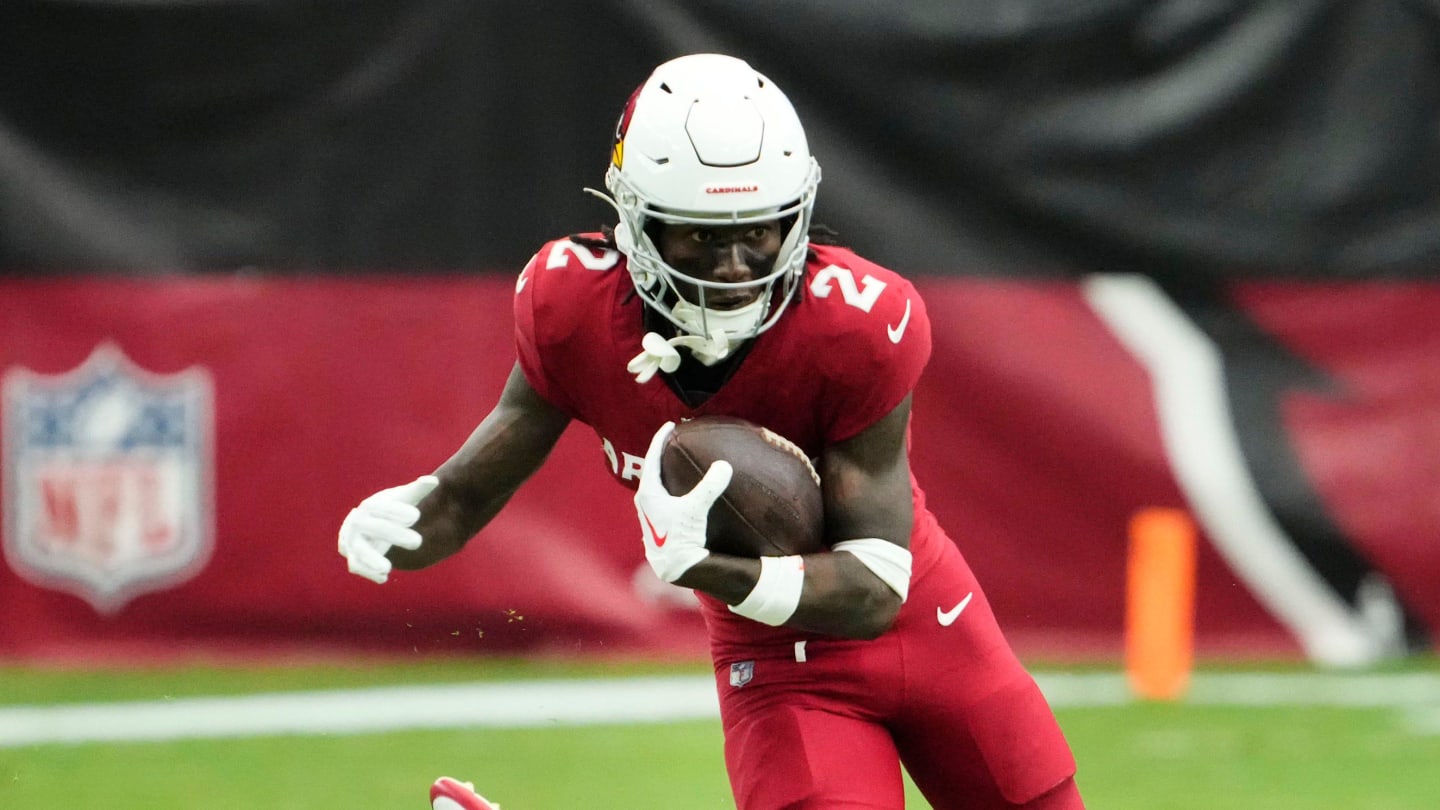
ARIZONA — The Arizona Cardinals didn’t quite maximize the talents of WR Marquise Brown during his time in the desert, though new beginnings could see Hollywood’s lights shine with the Kansas City Chiefs.
Brown was acquired for a first-round pick on draft night a few years back, and the hope was he and former Cardinals WR DeAndre Hopkins could form a dynamic duo for Arizona to lean on for years.
That didn’t come to fruition, and now Brown finds himself on a back-to-back Super Bowl winning team with Patrick Mahomes throwing him the ball.
There’s plenty of reason to expect Brown to bounce back in 2024, says PFF – at least in terms of fantasy football production.
“Playing through injury for the Arizona Cardinals last year, the Kansas City Chiefs‘ new field-stretching wide receiver Marquise Brown delivered half-PPR and PPR WR5 results in both season-long and per-game scoring. Fantasy managers should expect Brown to bounce back via positional top-36 results operating as Kansas City’s largely uncontested deep threat,” wrote Nic Bodiford, who explored Brown’s volume target totals after going through the various names Kansas City failed to replace Tyreek Hill with.
“Brown has efficiently earned high-volume target totals in each of the last four years despite regularly running routes past the sticks. His catch rates leave some to be desired but his 2023 down year inaccurately reflects his moderate surehandedness.Among 34 NFL wide receivers with at least 280 targets from 2020-to-2022, Brown’s 64.5% catch rate ranks 25th.
“Kansas City quarterback Patrick Mahomes is a notable upgrade on Brown’s former starting quarterbacks, Baltimore Ravens Lamar Jackson and Arizona Cardinals Kyler Murray. … Fantasy managers should expect Brown to bounce back as a WR3 or better in 2024.”
Even in the realm of actual football, there’s reasonable belief that Brown can emerge as a top weapon in Kansas City despite the presence of others around him. Mahomes has an arm like no other quarterback, and if Brown can remain healthy in 2023, the Chiefs may have gotten a steal on the market.
Arizona
How Arizona's monsoon is changing
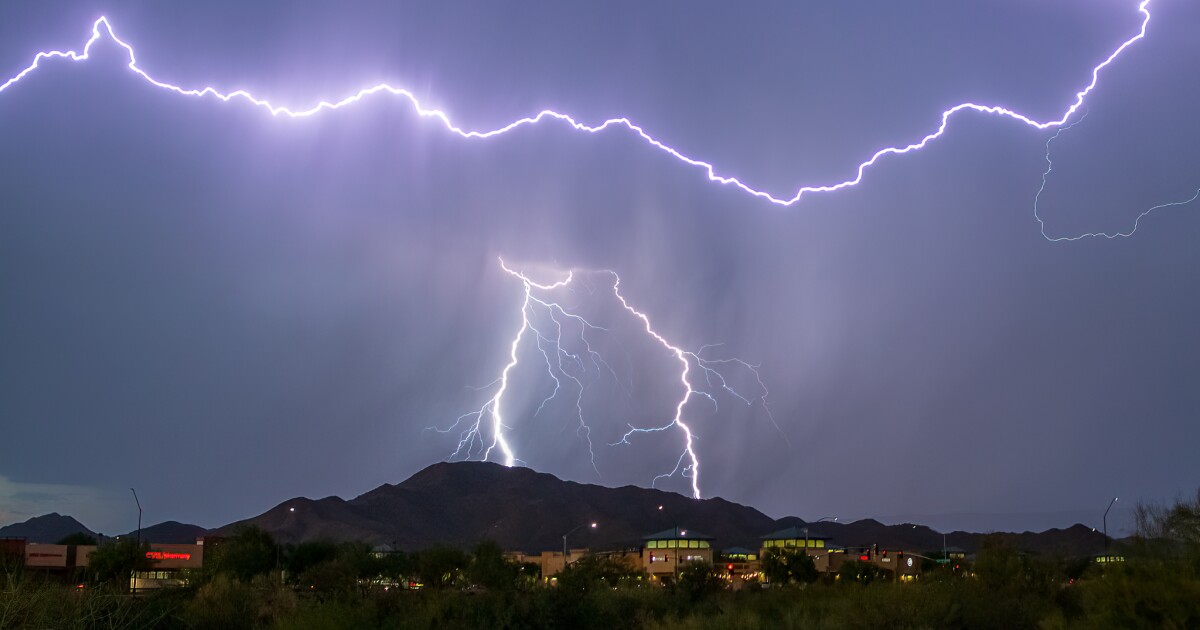
PHOENIX — Each summer, thunderstorms tower in our otherwise sunny Arizona sky. Winds shift out of the south and southeast, bringing moisture in all the way from the Gulf of Mexico. That moisture rises and forms thunderstorms in the heat of the day. This is our monsoon.
Much of Arizona typically receives 30 to 50 percent of its annual rainfall during the monsoon months of June, July, August, and September, which helps replenish our dry land and diminish wildfire threats.
UA
But, the monsoon as we know it is changing. As our atmosphere gets hotter with climate change, it’s able to essentially hold more water vapor and that’s altering how our monsoon behaves.
“We don’t get as many storms, but when they do come, they’re tending to produce higher rainfall amounts, more intense rainfall, and more intense winds,” says Dr. Christopher Castro with the Hydrology and Atmospheric Sciences Department at the University of Arizona.
That’s exactly what we saw play out here in Phoenix last summer. It was our hottest and driest monsoon on record. Sky Harbor only received 0.15 inches of rain. That’s more than 2 inches below normal.
But, what is considered a “normal” amount of monsoon rain has changed a lot in the past 50 years.
Every 10 years, new normals are calculated based on a rolling 30-year average. Our latest update came in 2021, giving us a new average that is based on rainfall data from 1991 to 2020.
This new normal showed an average rainfall in Phoenix for the monsoon season of 2.43 inches of rain. That’s more than a quarter of an inch drier than the previous average, which is a big difference here in the desert!

KNXV
Castro and his team at the University of Arizona are leading the way when it comes to research on how climate change is impacting our monsoon. Although not yet published in scientific peer-reviewed journals, they have run experiments simulating how storms move down into the Valley.
They have discovered that a greater number of green spaces, like parks, golf courses, and green landscaping, are leading to fewer storms making it down into the city.
“The presence of all these watered areas is suppressing the amount of instability in the atmosphere. So, it’s harder to initiate storms from the outflow boundaries,” he says.
So, as storms try to move down off of the Mogollon Rim, they are now often getting diverted around the periphery of the Phoenix metro instead of rolling right through it like they used to.
Scientists like Castro have also seen a broadening of our monsoon ridge, which is impacting our monsoon, too.
KNXV
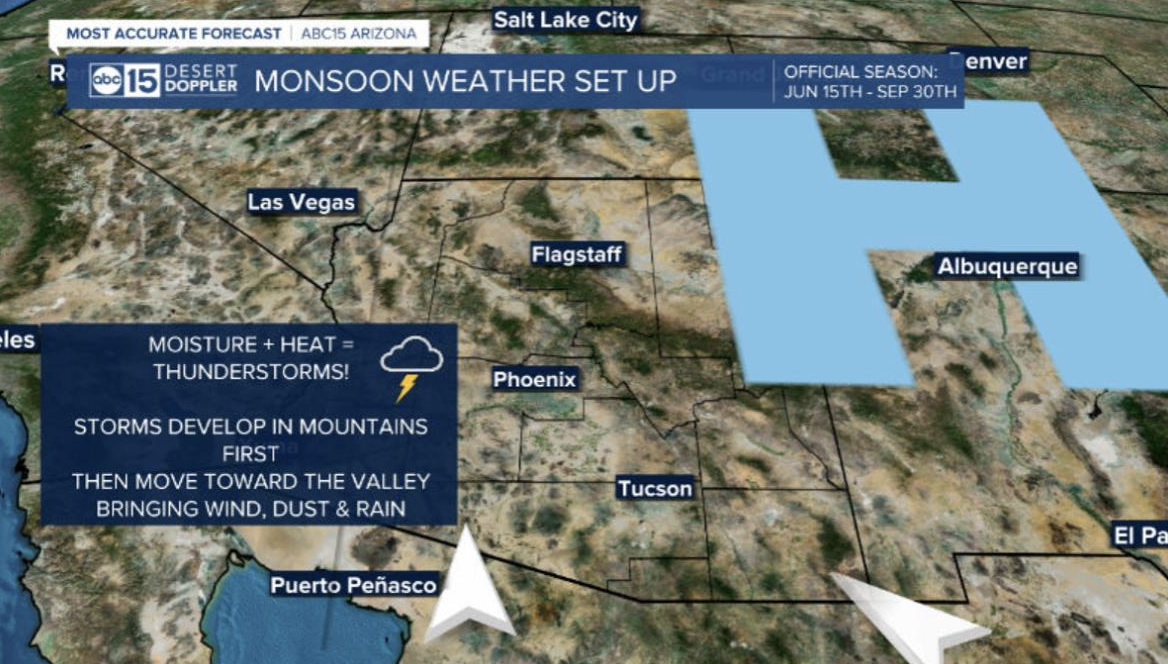
It’s the ridge of high pressure, which sets up near the Four Corners during the summer, that allows monsoon moisture to flow in.
“What we’ve observed in the last 20 years or so, is that the monsoon ridge is growing more intense and more spatially expansive. The bigger and more expansive that ridge is, the more propensity there is for the air to sink from the upper atmosphere. So. it suppresses the atmospheric instability and it makes storms harder to form,” Castro says.
That’s exactly what happened last year. As that ridge of high pressure sat over Arizona, it suppressed storm formation and made it much hotter. Our 2023 monsoon season was the hottest and driest on record in Phoenix.

KNXV
2020 was also a so-called “non-soon” with only 2 days of measurable rain in Phoenix. That year, we received 90% of our monsoon rain (0.90 inches) in just 2 hours with one particularly bad storm the night of August 20, 2020.
Castro says that’s the fingerprint of climate change in the desert.
“It’s really about the extremes. The monsoon is, generally all the way around, getting more extreme. So, when we get our heat waves now those are more intense than they used to be and when it rains, it may not rain as frequently as it used to, but it tends to be more intense,” Castro says.
That intensity makes it harder for us to adapt.
When it’s extreme heat, we see more heat-related deaths. We had 987 heat-related deaths across Arizona last year. 645 of those happened in Maricopa County, mostly during the hottest and driest monsoon on record.
When it’s extreme rainfall, we see more flash flooding and complete destruction near wildfire burn scars since the charred ground can no longer absorb water.
“From the water supply perspective, it’s bad news for recharge of the groundwater table. If you’re drying out the soils and then realizing your precipitation with only a few intense events, more of that precipitation is likely to run off. There’s also a greater danger for wildfires to happen and that totally changes the characteristics of the permeability of the soil. Then, when it rains, that water will immediately wash off very similar to a landslide,” Castro says.
A bigger, broader monsoon ridge also deflects atmospheric disturbances, known as inverted troughs, from tracking through Arizona.
Those disturbances often serve as triggers to get widespread rain and thunderstorm activity going during the monsoon.
“The expanded monsoon ridge is suppressing the path of those inverted troughs more to the south, so the number of inverted troughs is decreasing. So, the frequency of big precipitation events is decreasing. But when they do occur, they’re occurring in a more moist environment that is favorable for heavier amounts of precipitation,” says Castro.
We’re seeing similar impacts across the country as the number of heavy downpours increases in this warming world.
KNXV

While downpours are increasing, periods of drought are increasing too.
Climate Central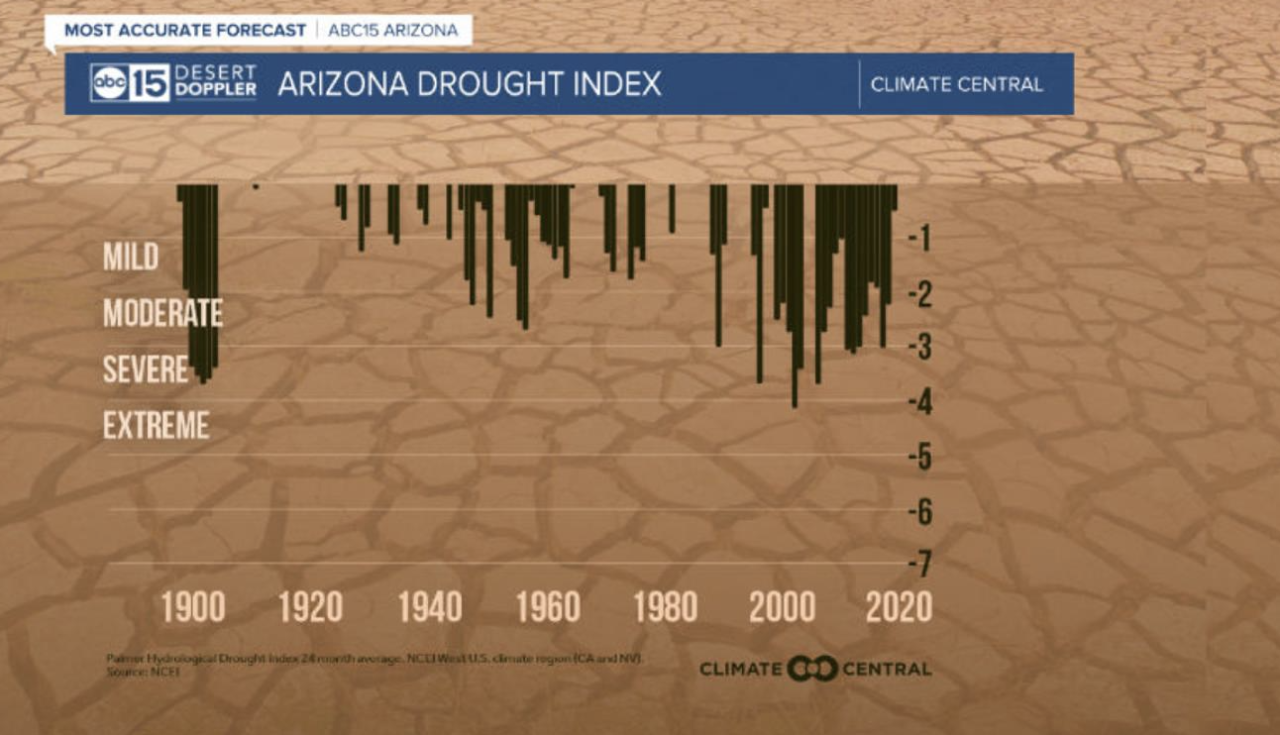
So we are increasing both of these extremes as our climate changes.
Castro says, “We’re going into a world where we have these more dramatic swings in climate variability, whether it’s winter or summer. There’s been this term coined climate whiplash, you go from one extreme to another, either between seasons or within a season. This is devastating from the standpoint of climate and our resiliency to the natural climate because if we’re exceeding the ranges of which our natural and human systems can cope with these whiplash swings, you’re going to go from one year where a dam nearly fails because it’s flooded to a year of devastating wildfires and the ecosystem cannot recover.”
-

 News1 week ago
News1 week agoWoman handcuffed in police car hit by freight train reaches $8.5M settlement
-

 News1 week ago
News1 week agoIsrael used a U.S.-made bomb in a deadly U.N. school strike in Gaza
-

 World1 week ago
World1 week agoEconomy, migration: Voters' main concerns ahead of elections
-

 Politics1 week ago
Politics1 week agoTrump campaign accelerates vetting of potential running mates
-

 Movie Reviews1 week ago
Movie Reviews1 week agoShort Film Review: Blue and White (2022) by Hiroyuki Nishiyama
-

 World1 week ago
World1 week agoFrance to provide Ukraine with its Mirage combat aircraft
-

 World1 week ago
World1 week agoWorld leaders, veterans mark D-Day’s 80th anniversary in France
-

 World1 week ago
World1 week agoRussia-Ukraine war: List of key events, day 833


